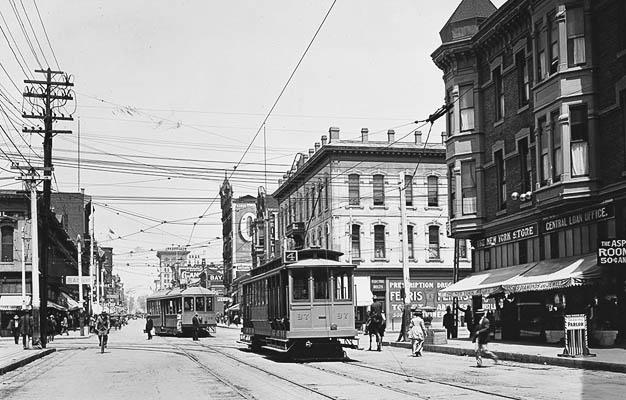In the late 1880s, transportation underwent a dramatic transformation in our region. Electrically powered street cars came on the scene – including some double deckers – replacing horse-drawn street cars.
On Nov. 19, 1887, the Electric Rapid Transit Company (ERTC) introduced an electric street railway system, running from D Street Downtown to Old Town; it was the first of its kind in the western United States, according to the San Diego History Center. Residents who rode on the railway commented on how smooth the ride was without the usual bad smells and noise.
Unfortunately, after just one year, the ERTC collapsed, and steam and horse-powered cable lines again took over the transit system.
In 1889 the San Diego Cable Railway replaced electric railway, but it wasn’t long before the transit system underwent yet another change back to electrification because of a businessman named John D. Spreckels. He formed the San Diego Electric Railway Company (SDERy) in 1891 with plans to revitalize the transit system.

After he purchased several of the failed downtown horse- and cable-drawn trolley routes, he consolidated them, standardized the tracks and installed electric cars, which resulted in the unified street railway system. Within a few years, Spreckels had created one of the best streetcar systems in the nation.
By 1914, SDERy was beginning to fade, overtaken by new transportation technology. Jitney buses and private automobiles began to erode SDERy’s revenue base. Buses were thought to be a more efficient and flexible way to travel. By 1924, they began to displace the streetcar lines entirely. By 1946, SDERy streetcar lines were almost completely replaced with bus routes. What followed was a series of events leading up to the rise of what we now know today as the San Diego Metropolitan Transit System, which provides Trolley service and bus services.
Photo Credit: Photos are courtesy of the San Diego History Center.